Products I use and recommend:
Copper Distiller and Hydrosol Book
Hydrosols used to be quite a popular item, even more than essential oils, if you can believe it! You’ve probably heard of rose water, lilac water, lavender water; these are all hydrosols (if done through the distillation process). But it is not limited to flowers alone, most herbs can be made into a hydrosol to draw out its medicinal properties. The instructions I am including below come from Rosemary Gladstar’s book I referenced above, but I also experimented with a slightly different method which I will also include. I found the second method made a stronger scented and tasting hydrosol but produced much less quantity.
Making Hydrosol at Home (1st method)
Equipment:
- Non-reactive pot (I used a stock pot)
- Brick, flat rock, or, in my case, a small fine mesh strainer/flour sifter)
- Glass lid without a vent hole
- Glass bowl small enough to fit into the pot, to catch the hydrosol water
- Stove top burner
Ingredients:
- Purified water
- Herb of choice (I did several distillations: mint, lemon balm, and comfrey. I also experimented with a combination of mint, lemon balm, and hops)
- 2-3 trays of ice (you can place these in baggies, just keep an eye on them while they heat up)
Directions:
- Put brick, rock, or strainer (anything that is heat resistant to keep the bowl up will work) in pot
- Place herb around the brick until it is just above the level of the brick
- Set bowl on brick
- Carefully pour the water into the pot (not the bowl) until the herbs are submerged
- Cover with lid and place ice in the lid
- Heat the water until steam begins to rise (the water will not be fully boiling, just simmering)
- You will see the water evaporate, hit the lid, cool down, and drip into the bowl
The distillation process took me about 20-30 minutes to complete. I discovered if I let it go too much longer my water was much weaker. Once you are satisfied with the amount in the bowl, turn off the stove and allow the pot to cool. Remove the bowl carefully and pour contents intoStore in a glass jar (you can use amber or cobalt jars, but it’s not necessary). Label with the name of the hydrosol and date it was rendered and store in the refrigerator. They say these can last for up to a year, but honestly I don’t think mine will be around that long!
Voila! Homemade hydrosol!
2nd method:
Equipment:
- Steamer pot
- Glass lid without a vent hole
- Glass bowl small enough to fit into the pot, to catch the hydrosol water
- Stove top burner
Ingredients:
- Purified water
- Herb of choice
- 2-3 trays of ice
Directions:
- Fill bottom pot about 1/2 way
- Put steamer pot on top and place herbs in, leaving a small “hole” in the middle for your glass bowl
- Place lid upside down and fill with ice cubes
- Bring water to a boil, then turn to low and continue to simmer
The steam will work its way through the herbs, hit the cold lid and drip into the bowl. I found this to be very effective, but it does capture less water. Follow the remaining directions above once you have gotten enough water.
I’ve decided I like the hydrosols so much I purchased my own still for home use. Once I receive it I will put it to work and let you know how it turned out!
(on a side note, almost every book on herbs, aromatherapy, and essential oil use is going to contain some form of earth worship or paganism. Please understand I do NOT embrace this ideology, however, because books on these subjects written by Christians are either non-existent or I simply have not found them I read and recommend these books for their educational purposes. Please read with discernment and find the gems within.)




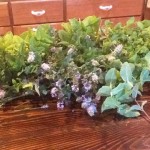
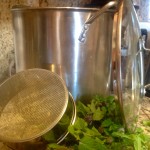
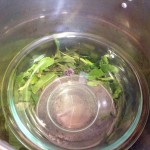

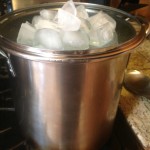
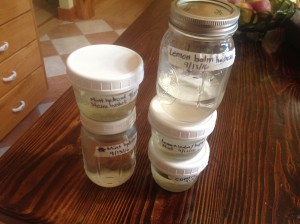



Leave a Reply
You must be logged in to post a comment.